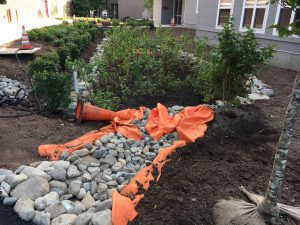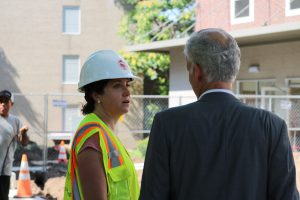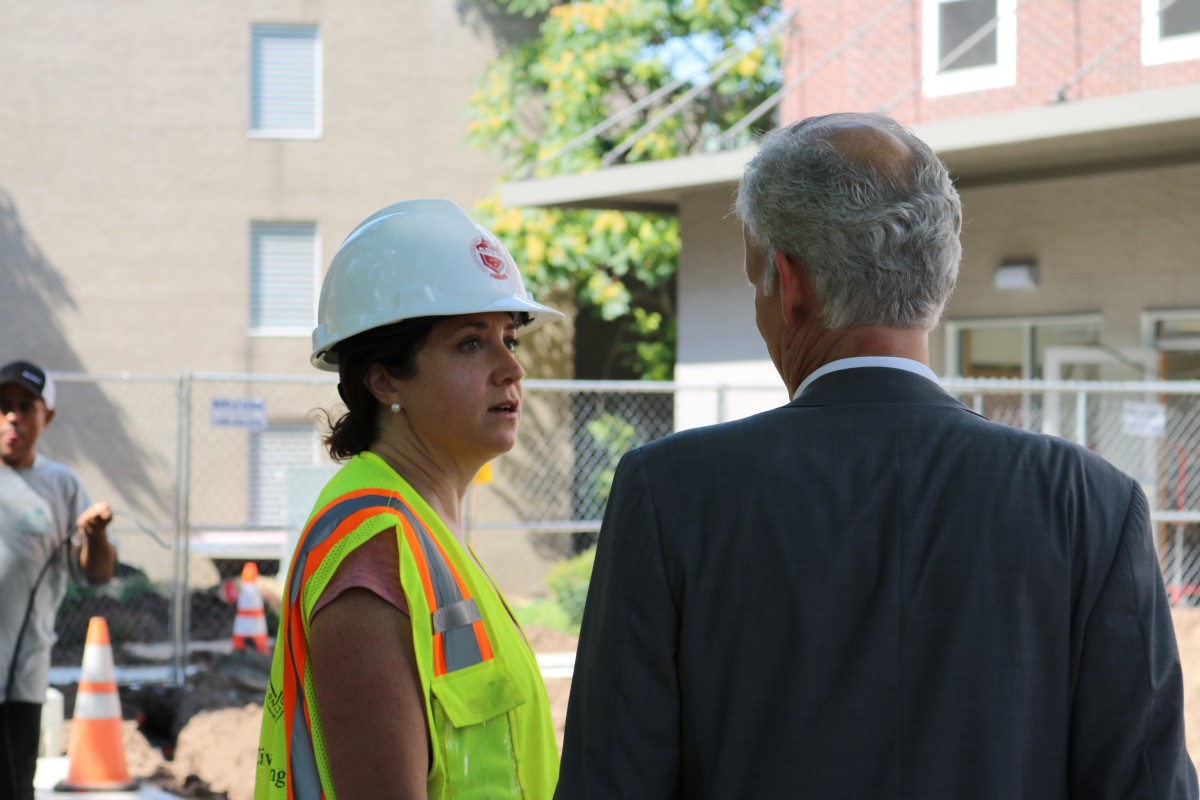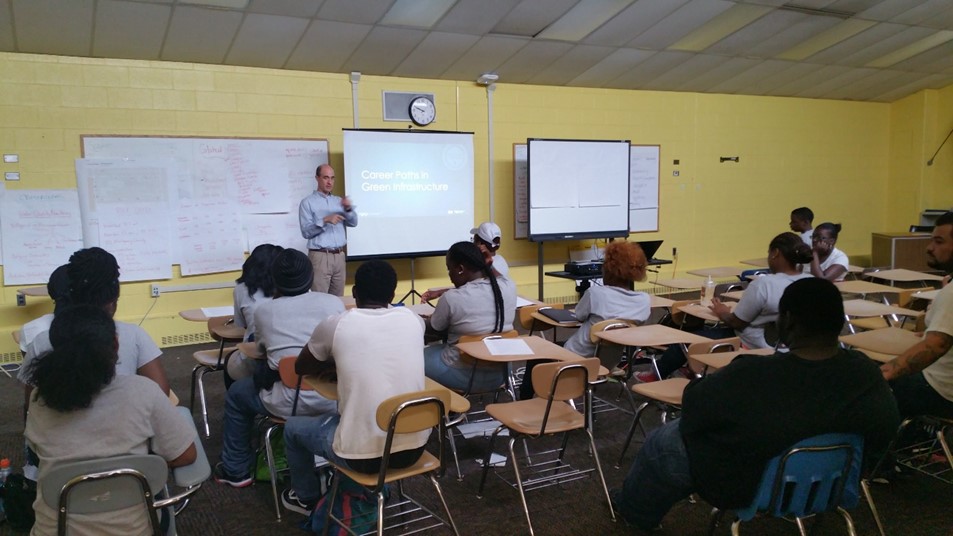
Planners expect the Living Laboratory and other parts of the Stevens Institute of Technology (Hoboken, N.J.) campus to house 20 identical green roof setups, four bioretention planters, and three rain gardens when all preparations are complete. Each will be equipped with sensors that measure performance factors like flow speed and direction, retention rates, and even water quality under different combinations of filtration media. Stevens Institute of Technology.
If you’re an urban stormwater manager considering new green infrastructure, you want to make sure you choose the design that will retain the most runoff for your specific site without breaking the bank on construction. For bioretention planters and other designs that tend to be small, mobile, and effective at reducing inflow to storm sewers — perfect qualities for urban use — that decision usually comes down to selecting the right filtration media.
A unique new research building at Stevens Institute of Technology (SIT; Hoboken, N.J.) focuses on finding the most cost-effective filtration media for use in varying settings. The site, dubbed the “Living Laboratory” by SIT students, was designed to feature several identical copies of bioretention planters, rain gardens, and green roofs. This enables rare side-by-side performance comparisons of different filtration media under the same conditions.
The science of green infrastructure
Elizabeth Fassman-Beck, a sector-leading expert in green roof design who teaches stormwater management at SIT, oversaw the design of the Living Laboratory. She explained to SIT that having duplicate systems in place ensures that any conclusions drawn are scientifically sound.
“When you work in the field, you have almost no control over anything. Having multiple setups that are the same allows us to repeat each experiment in the field,” Fassman-Beck said. “Because it never rains the same way twice, having two systems that are exactly the same, being subject to the same rainfall, is how you address that. That’s how you address validity, and create statistically valid experiments.”
Time-lapse video courtesy of Stevens Institute of Technology via EarthCam.
While Fassman-Beck, her students, and SIT crews wrapped up construction of the facility this summer, some green infrastructure systems are still being prepared for use in experiments. All told, Fassman-Beck expects the facility and other parts of the SIT campus to house 20 identical green roof setups, four bioretention planters, and three rain gardens when all preparations are complete. Each will be equipped with sensors that measure performance factors like flow speed and direction, retention rates, and even water quality under different combinations of filtration media.
Knowing these metrics is especially important for stormwater managers in flood-prone areas like Hoboken, which sits on the floodplain of the Hudson River and is only 0.9 m (3 ft) above sea level at its lowest point.

Elizabeth Fassman-Beck is a renowned expert on green roof design and maintenance. In addition to spearheading the proposal to build the Living Laboratory facility at Stevens Institute of Technology (Hoboken, N.J.), she also drives curriculum planning and seeks out funding opportunities. She teaches hydrology and stormwater management at Stevens under the Department of Civil, Environmental, and Ocean Engineering. Stevens Institute of Technology.
Gearing up for groundbreaking research
SIT provided full funding to construct the Living Laboratory and the U.S. Environmental Protection Agency (EPA) agreed to cover half of the costs to build and operate the bioretention planters. But funding to support full ongoing data collection and analysis, at this time, remains elusive, Fassman-Beck said.
As she and her team pursue research grant opportunities, their focus is on getting the facility primed for students, both in and outside the university. For example, one pending grant would open the laboratory to visiting K-12 students for hands-on green infrastructure lessons if approved.
“I have partnered with Stevens Center for Innovation in Science and Engineering Education, who are experts in STEM (Science, Technology, Engineering, and Mathematics) curriculum development and teacher training. I think we have a really unique opportunity here in reaching well beyond the ‘normal’ industry and regulatory audience, so this is pretty exciting,” Fassman-Beck said.
Even without ongoing funding, the Living Laboratory fixtures already can collect data, which are being used for real-world applications. With most of the hydraulic sensors in place throughout the facility, some of Fassman-Beck’s undergraduate students are using bioretention planters in the laboratory to help develop a system to measure downspout flow in collaboration with EPA. Green roofs on campus are already underway in their assessment of ‘conventional’ filtration media such as soil, pumice, clay, and compost.
“We’ve been working day and night all summer to get this building the way we want it,” Fassman-Beck said. “Research setups with real-world inputs being tested side-by-side are hard to find. But by allowing me to do that, Stevens is really enabling innovation in green infrastructure research.”
Learn more about SIT’s new Living Laboratory at the university’s website.






